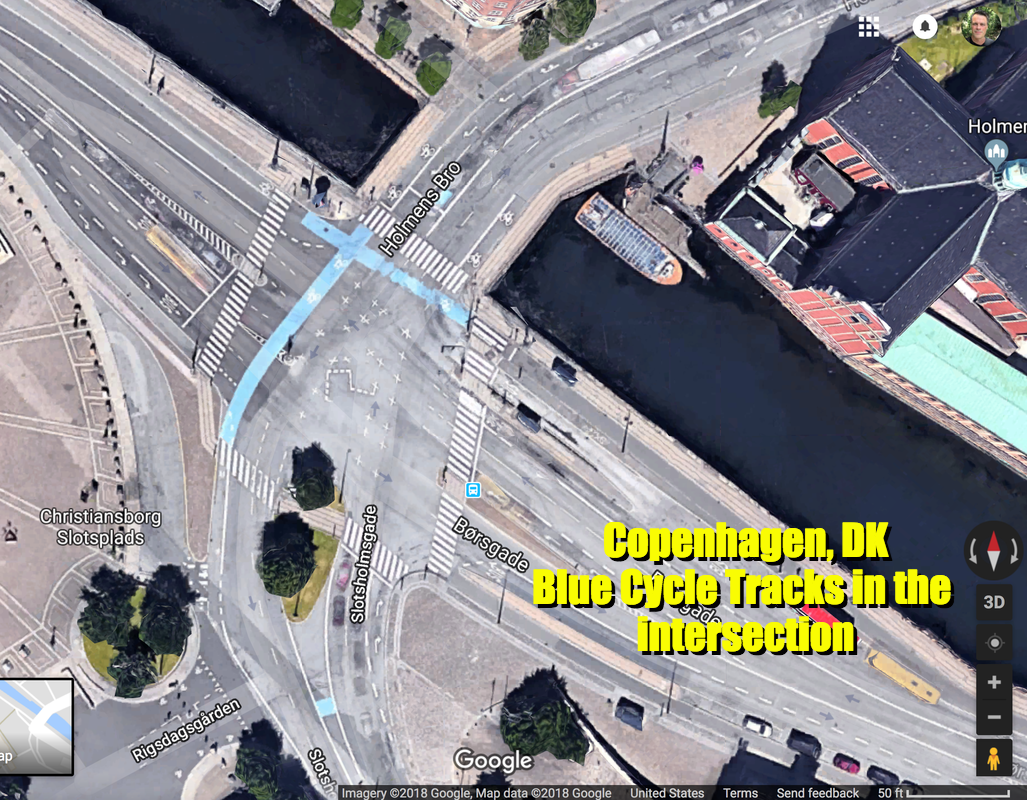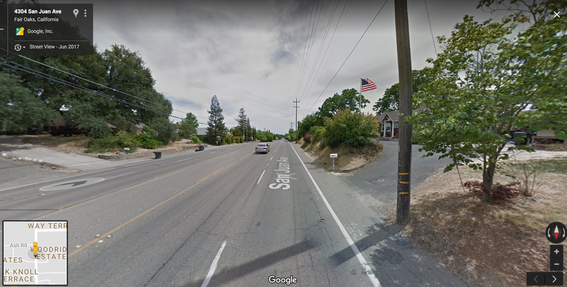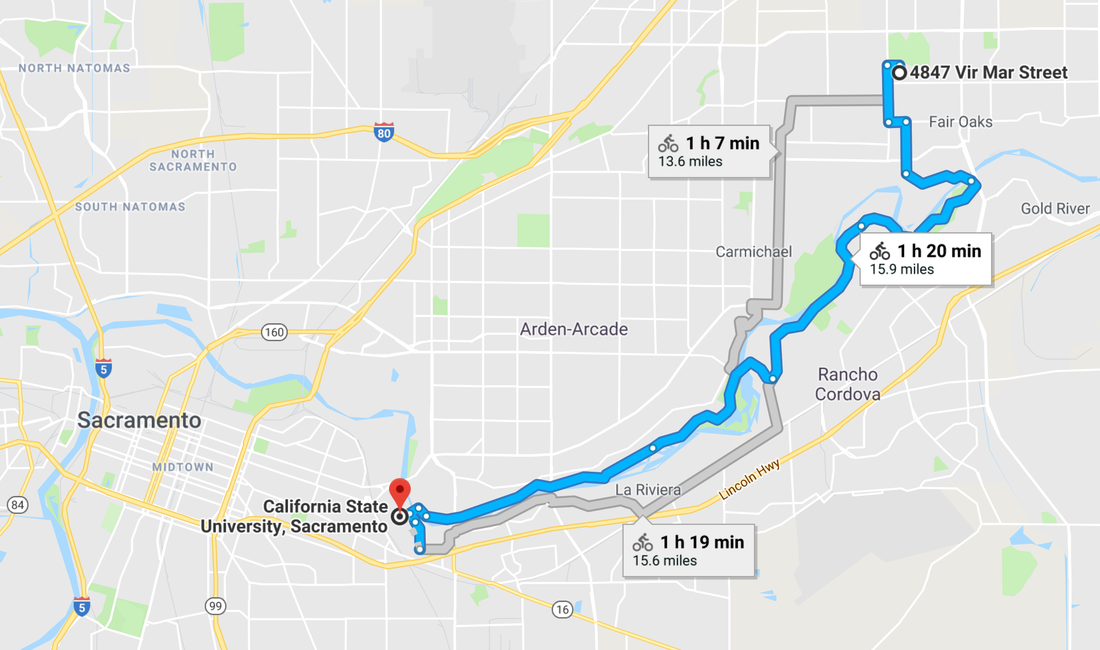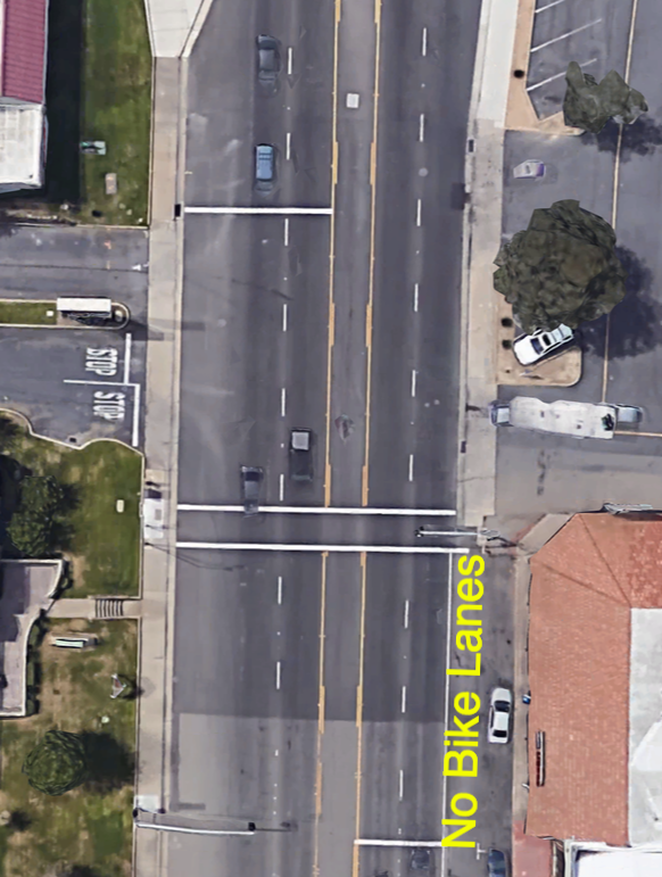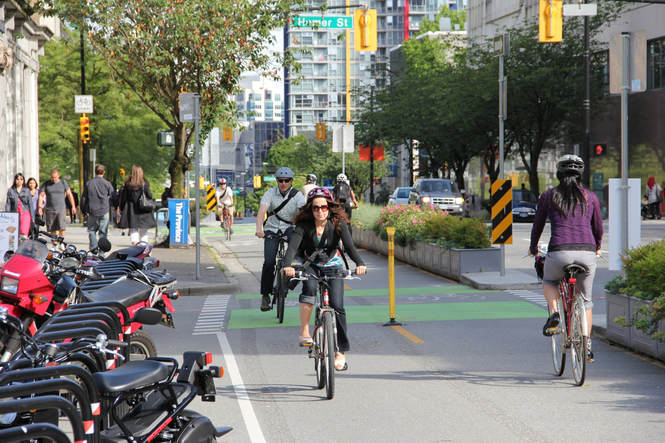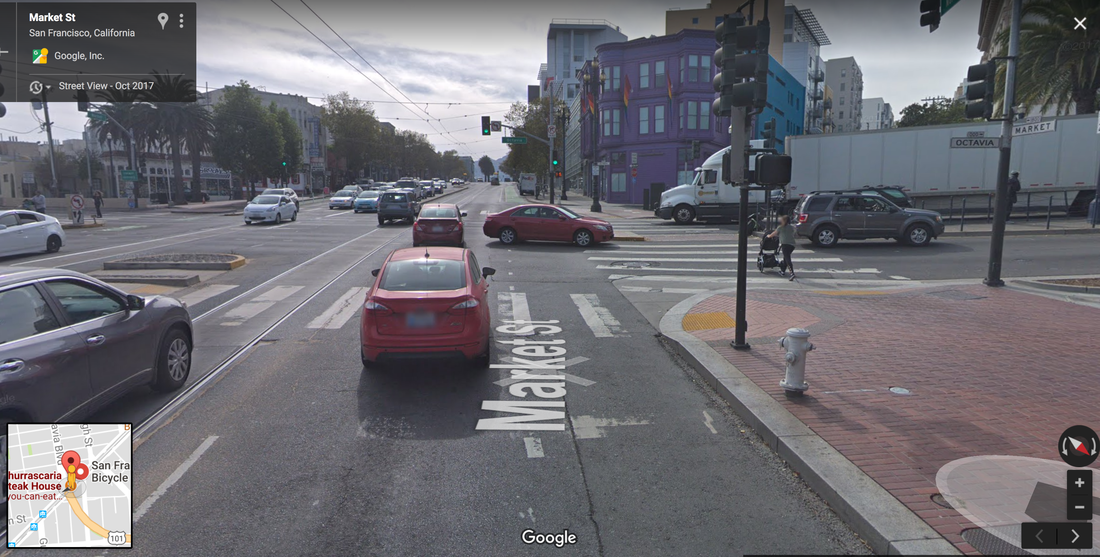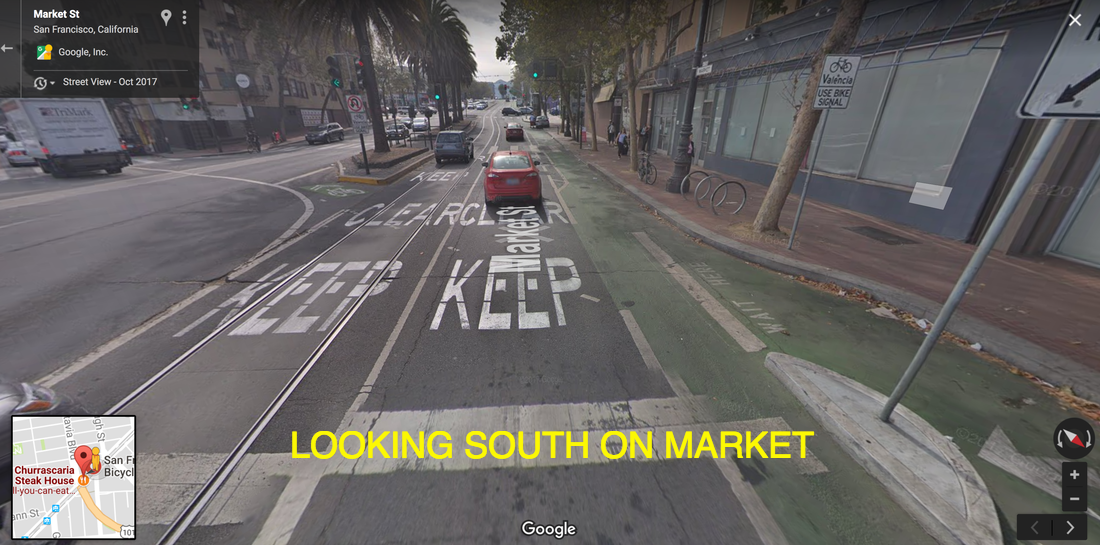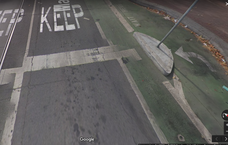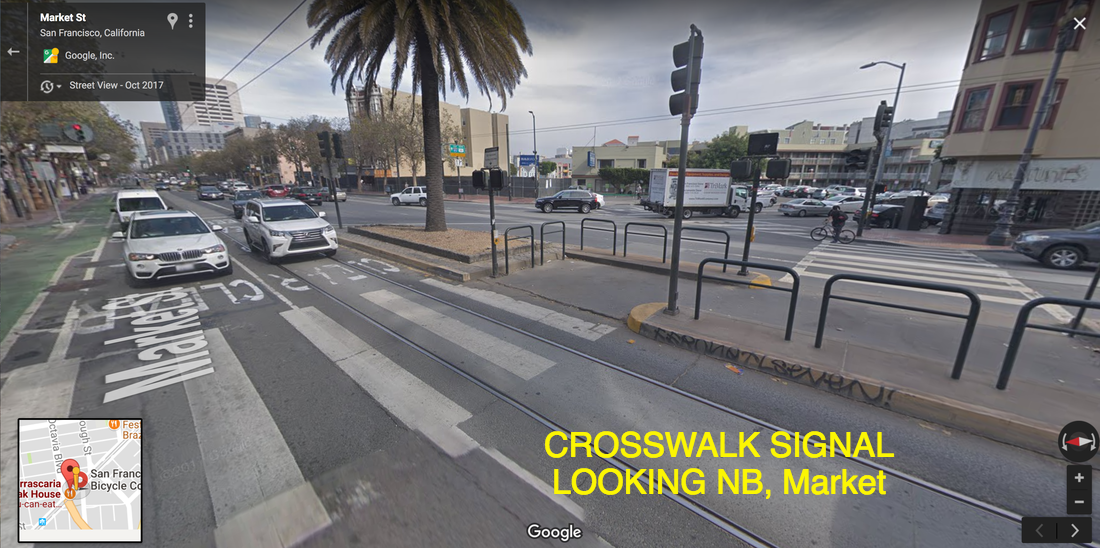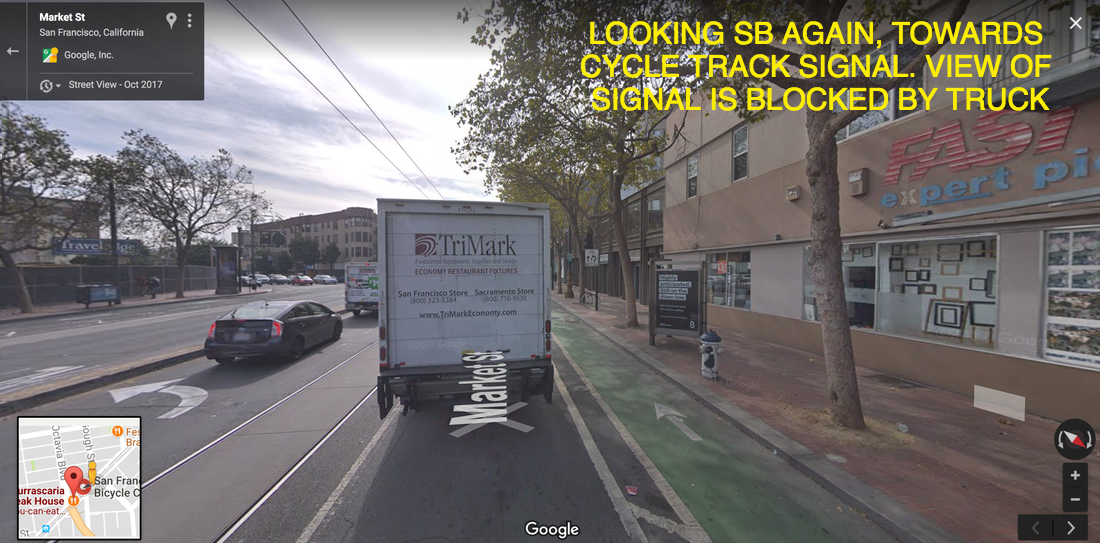PEDS: TRAFFIC FATALITIES in the United State FELL by nearly 18 percent from 2006 to 2015,
then they went BACK UP again to 37,000+/year, no improvement, no VisionZero realized,
but PEDESTRIAN FATALITIES ROSE by 12 % during the same ten year period. (NHTSA)
then they went BACK UP again to 37,000+/year, no improvement, no VisionZero realized,
but PEDESTRIAN FATALITIES ROSE by 12 % during the same ten year period. (NHTSA)
BIKES: BIKE FATALITIES in USA = 2% of the 37,000+ fatalities each year.
but BIKE TRIPS are only 1% of total trips. ∴ Bike riding = 2x risk of fatality vs car. (NHTSA)
but BIKE TRIPS are only 1% of total trips. ∴ Bike riding = 2x risk of fatality vs car. (NHTSA)
In Copenhagen, Denmark, heavy user of Cycle Tracks, accidents there went up 11% AFTER the installation of Cycle Tracks, especially at the intersections.
|
This is common sense, really. It is human nature. When one feels safe and secure, they are less cautious.
As cyclists feel more insulated from traffic with Cycle Tracks on road segments, they are less cautious when coming to an intersection where the confusion factor is vastly multiplied for both cyclists and drivers. Many do not know what to specifically do when it comes to an intersection location. Same with drivers of vehicles. It boils down to: who has the right of way. As long as right of way is shared at intersections between bikes, peds, and vehicles, there are going to be more severe accidents at these locations. In Copenhagen, they have installed BLUE Cycle Tracks at intersections to try and define the area where bikes should travel through an intersection. Studies done in Copenhagen have found that where only ONE of these BLUE Cycle Tracks were installed, there were less accidents with bikes (less confusing). But when three or four of these were used connecting all corners, their value was lost and the accident rates with bikes actually went up 50% than without them. The after condition with these BLUE Cycle Tracks was worse. This is common sense, really. It has to do with drivers ignoring too much information. When we saturate an intersection with traffic controls, pavement markings, numerous signs, signals, and curbs and stripings, we confuse drivers. Accidents will go up. There is controversy here in the USA as many transportation planners seek to install Cycle Tracks as a safety measure, when in fact, they have not proven to be safer. In fact, studies in Copenhagen have shown that accidents actually went up after installing these Cycle Tracks. (see http://www.vehicularcyclist.com/copenhagen1.pdf). There is a lot of cycle activism and not enough thought about safety, in my view. Green efforts are being pushed without enough thought about what the cyclist fatality rate has been, and what it is now. Its going up btw, and there is a reason for this. We need to be addressing safety first, green second. We need to slow down on activism, and embrace the idea that autonomous vehicles and road systems redesigned completely, with true separations of the modes of travel are realized. We need to reject the idea that vehicles and cycles and peds can safely co-exist at intersections. Our 37,000+ deaths in the USA alone, and rising in recent years, do not bear this out. We must find solutions that WORK! Even AASHTO has not adopted these Cycle Track treatments, but these are being installed in more progressive cities where the liability risks are being taken while conducting an experiment. I believe it is important to note that while the USA has had a push to get people to ride bikes, that the fatality rate for cyclists has been increasing in the past few years. Why is this? I believe it is because we are still mixing bikes with vehicles, especially at intersections, a dangerous activity (see my story below), and projecting that they are now safer with green Cycle Tracks or bike boxes, giving a false sense of security to some bike riders, and confusion to drivers who do not understand them. You can't educate a tourist of a city like San Francisco. They will not know what to do with a bike box, and probably won't know what the green lanes are for. Its not a standard yet.
|
A study in Copenhagen, Denmark, found that accidents actually increased at intersection when more than one BLUE Cycle Track was installed. If three or four were installed, accidents between bikes and cars increased 50%. Why is this? I think it is common sense. Drivers of cars were overloaded with yet another traffic control to observe at an intersection when there are typically too many already, and cyclists felt more secure in the blue paint, when in fact, they weren't safe.
(see http://www.vehicularcyclist.com/copenhagen1.pdf). Truly, this is too complicated! watch...
Surely someone is going to be confused over this. Confusion leads to accidents.
|
My Daily 32 mile Round Trip Bike Commute to College. It was 1982 in Sacramento County.
I'll be honest with you.
|
I have seriously tried the BIKE COMMUTE several times, over decades of time. And in each case, there has been significant danger to myself, even when on the dedicated bike trails.
My first experience was in college, when I would commute to and from California State University, Sacramento, on a daily basis for three years, to attend my 18-21 unit semester schedule, riding from my apartment in Fair Oaks, CA. I had a copper colored Schwinn Continental 10 speed bike. My commute included a mile of surface streets and about 15 miles of dedicated Class I asphalt Bike Trail that went along the American River Parkway, very beautiful, and there was an off ramp directly to the university campus. A fantastic system and great use of a natural resource. Almost could not have been better in any way, the supreme biking option! It was a 16 mile trip each way, so I got 32 miles of bike ride in every single day. It was exhausting and I found myself sleeping in some classes, my body needed the rest, s I rode my heavy and clunky bike hard at 15 mph so I could do the trip in an hour... so there is cost to involving exercise in your commute. San Juan Avenue Bike Lane -- 3 to 4 feet wide even still 35 years later.
VERY DANGEROUS! ...because of high speed traffic next to narrow bike lane. |
MY COLLEGE BIKE COMMUTE: 16 MILES EACH WAY. 32 MILE ROUND TRIP. EXHAUSTING AND HOT.
Even with 15 miles of dedicated CLASS I bike trails along a river, because of the 1 mile of surface streets where bikes mixed with traffic, and the dangers of that, I decided in time that commuting by bike on surface street mixed with traffic was not a good idea. When I could afford a car after college, I bought a car. The bike commute at the time was a financially motivated decision, and I compromised my safety to do it. My safety was compromised on the surface street portion, which was only 5% of the total, the last mile, but it was enough danger with the trucks, which suddenly would pass you at high speeds, very close, and this unnerving experience was unacceptable.
|
I interfaced with surface street traffic on the home end of the trip, about a mile. This was on San Juan Avenue, a 45 mph corridor at the time, and there was a 4 foot bike lane on each side of this four lane boulevard with suicide lane in the middle. It was extremely unnerving when a very large truck would pass you at 45 mph adjacent to your bike lane, you going only 10-15 mph, and the differential of 30 mph just two feet away. This was extremely unnerving when your whole bike is sucked towards the truck in the vacuum of air caused by the truck. It felt like you were going to hit the side of the truck and have a terrible accident with the steel moving past you. This of course, is unacceptable. It is what is wrong with current thinking and ideas for bikes mixed with higher speed vehicles. It just is not safe. I know, I have experienced it, personally, and have chosen not to endanger myself. And yet despite these dangers and the fact that I had no other option but to take a bus (which had two hour headways at the time), I did not get killed, did not get into an accident with a car or truck, but the near misses caused me to reconsider my safety, and go back to using a car, where my body was not directly exposed to high speed metal and tires flying by. The only accident I had on my bike commute actually took place on the class one bike trail itself, where it was nighttime and my bike light was not working but I tried to carry on homeward bound from college looking down at the yellow stripe on the pavement of the bike trail, which I could still see. Nobody wore a helmet in those days, I don't even think they made a bike helmet. I did not see the bicycle riders coming the other direction who also did not have a light, and were also riding at a fairly fast speed, so I had no warning. We met suddenly and had a head on collision. It was very painful and took several moments until I could get up and get back on my bike. I did not even see the faces of the people who I crashed into or who crashed into me, I could not tell.
Fast Forward 33 years. My Son Commuting to Work, It was 2015 in Sacramento County
No improvements were made since my college days...
|
My son had a ten speed bike, light weight, and wore a helmet. He was traveling on Fair Oaks Blvd. in the outside vehicle lane (Class III) on his way to work, saving the planet in the process. There was a suicide lane TWLT, and two vehicle lanes in each direction. The access to adjacent commercial properties was abysmal at best. Parking lots of older establishments right up to the edge line of Fair Oaks Blvd. Instantly transitioning to a signalized driveway, then a sidewalk with a high curb, but no bike lane. More driveways into the parking lot. There is no way a cyclist could navigate this mess without significant risk or injury. There were turning movements in and out of commercial establishments from all sides and all angles. My son was just hundreds of feet from arriving at work. Then it happened!
He was riding along, and a vehicle in the lane next to him swerved over to make a right turn (seeing their driveway) and turned suddenly in front of him blocking his pathway and "right of way" which he clearly had. My son hit their car broadside at nearly full speed which was probably 20 mph. He was wearing a helmet, but still got a concussion. An ambulance arrived as he lay down on the sidewalk, and took him to the hospital. There was a big dent in the side of the car, from his head, and thankfully he was wearing his helmet which did break in the process. But it made me think, nothing has changed much in Sacramento County for the past 33 years since my days at college, where I too in my twenties, invincible, rode a bike on the city streets. It was risky and dangerous then, and it is still risky and dangerous now. Why?? There is no way a Cycle Track, for instance, could fit on this road. Even if it did, there are too many driveways into parking lots. Merchants want all of the access they can get for the good of their business, and this is understood. To be honest, it just is not a good location to ride a bike. The design of the commercial establishment access is not PED or BIKE friendly. But the main danger to cyclists, are the drivers of vehicles. Drivers who do not see the cyclist. They are in their blind spot from time to time. Cyclists are in their peripheral vision, and their brain just does not pick them out of the noise of traffic, because they are focused on the dangers of cars and trucks as they pull out of a driveway. Distracted from the finer details such as a cyclist, they pull out from a driveway or from a side street and right into the path of a bicycle or a motorcycle. Or they make a right turn in the same direction as the cyclist riding on the edge of road and clip the cyclist because they just did not see them. It is an all to common experience, in a bike lane or not, and those who have regularly rode bicycles or motorcycles on city streets, like I have, understand the very real danger of mixing vehicles and bikes and pedestrians at conflict points. The bikes and pedestrians always lose badly in the collision. This is why I am an advocate for separation of these modes of travel completely. I believe we need to make sidewalks safer, have barriers between vehicle lanes and ped or bike lanes. We need to make crossing of roads safer, don't mix ped phases with through traffic phases (at the same time) or we will have vehicles making right turns clipping pedestrians. For safety's sake, we need to do a better job of separating these modes of travel. |
Fast Forward to Today. Introducing CYCLE TRACKS--- in many cities throughout the world
|
Today, actions are being taken to help improve safety for bike riders on otherwise dangerous city streets, such as providing a slightly wider bike lane (or two bike lanes together in their own space) and green areas that are more or less dedicated to bikes (called Cycle Tracks). However, in many ways these cycle tracks are just like my previous experience where I had 95% of my bike commute completely protected from cars with a beautiful dedicated river parkway paved bike trail, but the other 5% part of my trip was on an unprotected path, maybe with a bike lane, not always, but always mixed with very fast moving vehicles! I found it unacceptable and dangerous. We still have this problem today with Cycle Tracks because there are still significant portions of the roadway on a cyclist's path which are vulnerable to autos and trucks, such as where the Cycle Track ends, and the bike rider is left to fend for themselves mixing with vehicular traffic on a road where a Cycle Track does not fit. |
|
|
FOR EXAMPLE...
where Cycle Tracks are failing... Take Market Street in San Francisco. Here we have a Cycle Track which just ended at a very busy and confusing intersection. The SB light is green and a pedestrian is crossing SB, has the right of way, but she is threatened by a red car car going WB, which did wait for her and her baby to cross, but why was the car there?? while traffic is going SB right next to it? It is a confusing intersection. Also note the bike lane going straight. It too has a green light, but the lane is blocked by the red car going WB. Imagine a bike going straight SB thinking it has the right of way, but the adjacent red car also going SB decides at the last moment to make a right turn onto Octavia and completely smashes the bike rider in the process. A bike rider has no confidence that they would not be in the blind spot of a car immediately to its left. Its unsafe. Its unnerving when you are on a bike or a motorcycle and an automobile crosses your path by turning suddenly in front of you. You are vulnerable as a cyclist when mixing with vehicles. Cycle Tracks are a good idea, but they are an incomplete idea because they give the impression that the bike ride is somehow safer, when in fact, it is completely unsafe where these Cycle Tracks END, and the cyclist no longer has any dedicated space to ride in. This is where the modes clash. |
|
ANOTHER EXAMPLE from the same location, Market Street, one intersection down
The green area in the photo on the right is the dirty Cycle Track. It is confusing to the intersection as a whole, and drivers of vehicles unfamiliar to the area will not know what to do about it. This confusion creates unsafe conditions. The Cycle Track splits into two lanes, one to go straight and the other into a bulbed out area to wait to make a left turn across six lanes of roadway when a signal turns green, a special bike signal. The pavement marking says to the cyclist WAIT HERE. However, there is KEEP CLEAR painted all over the vehicle lanes that the bikes are supposed to cross through when the signal turns red for vehicles. The signal which is in place for a crosswalk up ahead, is 140 feet ahead of the stop bar as indicated by the two green lights. It does not seem reasonable that vehicles traveling on Market Street are going to necessarily see that pavement marking in time if the crosswalk signal ahead turns red... there is no escape for a vehicle caught in the yellow light. |
This is, in my view, a very confusing set of traffic controls, so many words on the pavement, different colors of pavement, filthy pavement, signs in unusual places, striping that veers off in a curve, a signalized crosswalk ahead with its own signal!
This is especially confusing to a visitor to San Francisco, of which there are many on a daily basis. Even a local driver can get confused. |
|
Here is a real world example of a truck on Market Street right at the Cycle Track signal crossing, which is blocking all views of any traffic signal that is supposed to protect the Cycle Track unsuspecting cyclist. As a vehicle follows this truck, the truck may just clear the yellow and the cyclist proceeds, but at the same time the trailing car is also there and did not stop at the stop bar, because they did not see the signal to know they should stop. In the worst of cases, the cyclist is broadsided by the trailing car.
In my view, this is not a safe condition for cyclists. There are too many unknowns, and there is some intersection confusion with the location of this Cycle Track signal, which does not share the same space as the crosswalk signal. Painting a bike lane green does not make it safe. It may warn drivers not to use that space, but it also may make the cyclist feel safer and more protected, when in fact, they do remain vulnerable, possibly even more so with a false sense of security. |
If I were driving here for the first time, as a tourist, following this truck, I would have no idea that I was just about to approach a bike crossing where they actually had a green light, and the truck just finished the yellow cycle and got through before they proceeded. I might hit the cyclist if I am surprised by the idea that I have a red light that may or may not have just come into view, but am still going 25 mph, and the cyclists are in danger. It is confusing.
|
Conclusion. Bicycle fatalities are UP, even with all we do.
|
In my view, until we have separation of these vulnerable modes of travel (bikes and peds) from the highly lethal modes of travel (motorized vehicles and trucks/buses), we will not improve on our fatality statistic in the United States, which is peaking and hovering around 37,000+ fatalities every year* involving a vehicle. This is unacceptable. It is primarily the fault of allowing humans to drive, because a certain portion of the human race does not know how to drive safely and defensively, or they are inattentive/distracted, or they are risk takers traveling too fast, or they are impaired with drugs or alcohol.
Every time we go out and drive, we are facing this small demographic of dangerous people, who are also driving a vehicle. In my view, the ONLY way to solve this, because we have not improved on this in the last several decades, and we have to ask ourselves, why. Why are we not making progress in making our roads safer? What more can be done? I believe the answer lies in autonomous vehicles, where we perfect them with technology advances, and then take the human elements of 1) distraction, 2) risk, and 3) bad actors off the roadways. We will see the fatality rates PLUMMET. See AUTONOMOUS TRANSPORTATION PLANNING *NHTSA crashstats.nhtsa.dot.gov/#/ |
Bike Fatalities in USA are UP, a lot.
|
|
Published April 20, 2018
Article Author: Grant Johnson, TE, registered Traffic Engineer in State of CA |
